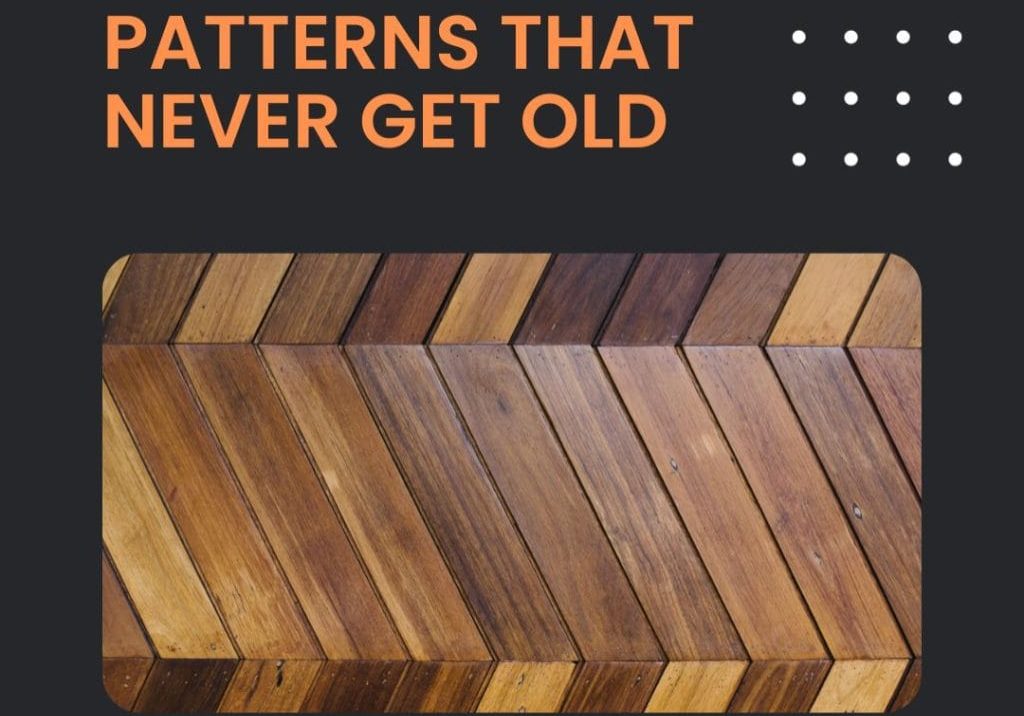When setting up your business premises, one crucial decision lies in choosing floor finishes. The right type enhances the aesthetic appeal and ensures functionality and durability. This article will explore the most common types of floor finishes, from the classic appeal of hardwood floor finishes to the modern charm of other materials. Understanding the pros and cons of each flooring type is paramount in making an informed decision that aligns with your business needs. With myriad options available, let’s delve into the world of floor finishes and discover what each option has to offer.
Polyurethanes and Urethanes
Delving into the specifics, we start with one of the most prevalent surface finishes: Polyurethanes and Urethanes. These floor finishes are renowned for their durability and resistance, making them an excellent choice for high-traffic commercial environments. Let’s examine what these finishes entail and why they might be the perfect choice for your business premises.
Description of Surface Finishes and their Benefits
Surface finishes, including polyurethanes and urethanes, offer a protective layer that shields underlying floors from scratches and stains. Renowned for their high durability, they withstand heavy foot traffic, making them ideal for businesses with a high influx of customers. Moreover, these finishes offer an attractive glossy sheen that elevates the aesthetic appeal of your premises, contributing to a welcoming environment for your clientele.
Water-Based vs. Oil-Based Polyurethanes
When discussing polyurethanes, it’s important to distinguish between water-based and oil-based options. Water-based polyurethanes provide the advantage of low odor and a quick drying time. They retain the natural color of the wood and resist yellowing over time, making them an ideal choice for light-colored hardwood floor finishes.
On the other hand, oil-based polyurethanes offer a warm, rich finish that adds depth to the wood’s grain. They take longer to dry and have a stronger odor during application, but they are often more durable and economical, which can be a significant consideration for business owners. Therefore, the choice between water-based and oil-based polyurethanes largely depends on your specific needs and preferences.
Pros and Cons of Surface Finishes
Surface finishes, particularly polyurethanes, offer remarkable durability, stain resistance, and a high-end glossy appeal. However, they can require a slightly more complex application process, especially for oil-based variants, and may produce a strong odor during application. While water-based polyurethanes dry quickly and maintain the wood’s natural color, they may not provide the same level of durability as their oil-based counterparts.
Penetrating Finishes
Transitioning from surface finishes, let’s delve into another common category of floor finishes – penetrating finishes, primarily oils and waxes. These floor finishes seep into the floor’s surface, offering unique advantages that might cater to your business needs.
Penetrating Finishes
Penetrating finishes, such as oils and waxes, penetrate deep into the wood, enhancing the grain and giving a more natural appearance. These finishes are easier to repair and require less maintenance, but may not offer the same level of protection as surface finishes.
Types of Oils Used
The market offers a variety of oils for penetrating finishes, each presenting different characteristics.
Linseed oil, is a common choice. Derived from the seeds of the flax plant, linseed oil is known for its deep-penetrating properties, enhancing the grain and natural beauty of the wood. However, it takes longer to dry and can yellow over time.
Tung oil, derived from the tung tree’s nuts, is another popular option. It provides a water-resistant, hard finish that does not darken or yellow over time, maintaining the wood’s natural color.
Danish oil, a blend of tung or linseed oil with varnish, balances aesthetic appeal and protection. It penetrates the wood like oil but provides a hard, protective surface like a varnish. Danish oil dries faster than pure oils, making it a convenient option for businesses.
Role of Wax in Floor Finishes and Its Maintenance
Wax is a penetrating finish, particularly for business owners seeking an antique or traditional look for their floors. Unlike oils, wax does not penetrate the wood deeply but settles just below the surface, offering a soft, satiny finish that highlights the wood’s natural beauty.
Maintenance is essential for wax finishes. Regular waxing is required to maintain its sheen and protective qualities, with intervals ranging from three to six months. It’s worth noting that floors with wax finishes should not be cleaned with water or vinegar, as these can damage the wax and the wood beneath.
Acrylic Impregnated Finishes
Let’s now switch gears and focus on a highly durable and unique option among the types of floor finishes, particularly popular in commercial settings – Acrylic Impregnated Finishes.
Acrylic Impregnated Finishes
Acrylic-impregnated finishes are known for their remarkable durability and color permeation, making them an ideal choice for high-traffic commercial areas. Unlike surface and penetrating finishes, these finishes incorporate acrylic and color pigments into the wood through a high-pressure process. This results in a floor finish that is resistant to surface scratches and maintains its color even when worn down, a unique property distinguishing it from other types of floor finishes.
Suitability for High-Traffic Areas and Commercial Settings
Acrylic-impregnated finishes excel in commercial settings with high footfall due to their exceptional durability. These finishes infused deep into the wood, withstand heavy traffic without significant wear and tear. Even when faced with surface scratches, the color’s steadfastness ensures the flooring retains its visual appeal, offering a practical and long-lasting solution for bustling business environments.
Maintenance and Care for Acrylic Impregnated Finishes
Maintenance for acrylic-impregnated finishes is relatively straightforward. Regular sweeping and mopping with a damp mop can keep these floors in optimal condition. A pH-neutral cleaner specifically designed for such finishes is recommended for deeper cleaning. Avoid using harsh chemicals or abrasive materials to prevent damage. Even with high traffic, these finishes need less frequent refinishing, making them a low-maintenance business option.
Environmental and Health Considerations
In our pursuit to understand the various types of floor finishes, it’s equally important to consider their environmental and health implications. This section will show how different flooring options can impact indoor air quality, individual health, and the environment.
VOCs and Environmental Impact of Multiple Finishes
Many types of floor finishes, particularly oil-based surface finishes, contain Volatile Organic Compounds (VOCs). These compounds can harm indoor air quality and contribute to environmental pollution. Choosing low-VOC or VOC-free finishes can lessen these impacts, promoting healthier indoor environments and a more sustainable world.
Health Considerations for Occupants
When choosing floor finishes, health considerations for occupants should be a priority. Materials high in Volatile Organic Compounds (VOCs) can negatively impact indoor air quality, leading to health issues, including respiratory problems, headaches, and allergic reactions. Therefore, selecting low-VOC or VOC-free floor finishes is crucial to ensuring a safe and healthy environment for all occupants.
Durability and Maintenance Requirements
This section will delve into various floor finishes’ durability and maintenance requirements and key factors in determining your flooring investment’s overall cost-effectiveness and longevity.
Comparison of the Durability of Different Finishes
When it comes to durability, hardwood floor finishes stand out due to their inherent strength and long-lasting charm. Hardwood floors, particularly those with polyurethane finishes, can withstand years of heavy foot traffic without losing their aesthetic appeal.
Acrylic-impregnated finishes are another durable option, particularly suitable for high-traffic commercial areas. Their unique process infuses color pigments and acrylic deep into the wood, resulting in a finish that resists surface scratches and maintains its color even when worn down.
Wax finishes, while offering a traditional look, require regular maintenance and re-application to maintain durability. They are not as tough as other finishes, but their soft, satiny finish can be a charming addition when maintained well.
Each type of finish has its strengths and weaknesses, and the choice often depends on the specific needs and demands of the business environment.
Maintenance Tips for Each Type of Finish
Hardwood Floor Finishes: Regular sweeping or vacuuming helps remove dust and debris. Use a damp cloth for spills, and avoid using excessive water. Use cleaners specifically designed for hardwood floors.
Acrylic Impregnated Finishes: These require sweeping and damp mopping regularly. Use a pH-neutral cleaner for deeper cleaning and avoid abrasive materials.
Wax Finishes: Regular waxing every three to six months is necessary. Avoid cleaning with water or vinegar, which can damage the wax and the wood. Use a soft cloth or mop for general cleaning.
How to Choose Based on Traffic and Usage
Choosing the right floor finish depends significantly on traffic and usage. High-traffic areas need durable finishes like hardwood or acrylic impregnated, which resist wear and tear. Conversely, low-traffic zones could benefit from wax finishes, offering a traditional charm despite requiring more maintenance. Ultimately, understanding the unique demands of each space within your business can guide you toward the most practical and visually appealing floor finish.
Aesthetic Impact of Finishes
In the quest to find the ideal floor finish, the visual appeal or the aesthetic impact of the finishes must be considered. The right floor finish not only enhances the functionality of your space but also contributes significantly to the overall interior design, adding an element of style and elegance. Let’s explore how different floor finishes can influence the aesthetic dynamics of your business premises.
How Different Finishes Affect the Look of the Wood
Hardwood Floor Finishes: These finishes offer a rich, natural look to the wood, enhancing its inherent grain and color. Depending on preference, they add depth to the wood’s appearance and can range from glossy to satin or matte.
Acrylic Impregnated Finishes: These finishes provide a consistent color throughout the wood, maintaining the look even when worn down. They’re available in various colors, offering versatility in matching the preferred aesthetics.
Wax Finishes: Wax finishes penetrate the wood, enhancing its natural grain and offering a warm, soft glow. They may darken over time, adding character and a vintage charm to the space.
The Impact of Sheen and Color Change Over Time
The sheen of a floor finish can drastically transform over time, affecting the overall aesthetics of your space. Hardwood floor finishes may develop a patina with age, adding a touch of vintage appeal. However, heavy traffic areas might see a reduction in sheen due to wear. Acrylic-impregnated finishes, renowned for their consistency, maintain their sheen and color longer, even in high-traffic zones.
Wax finishes, on the other hand, may become darker and richer with time, offering a unique charm. But they also require regular maintenance to preserve their sheen. Therefore, it’s essential to consider the immediate and long-term aesthetic impact when selecting the type of floor finish for your business.
Cost Considerations
The cost of floor finishes can vary significantly, and it’s an important factor to consider. It’s not just about the initial investment but also the long-term expenses involved in maintenance and potential replacement. Let’s delve into the cost considerations of the most common floor finishes to help you make an informed decision.
Cost Comparison of Different Finishes
Hardwood floor finishes are more expensive due to the high-quality material and installation costs. However, their durability often translates to lower long-term expenses. While moderately priced, acrylic-impregnated finishes can save costs down the line with their impressive resistance to wear and relatively low maintenance requirements. Wax finishes, on the other hand, are generally cheaper upfront but require regular maintenance, potentially increasing the overall cost over time.
Durability and Maintenance
Hardwood floor finishes: Known for their exceptional durability, hardwood finishes can last for decades with minimal maintenance, offering long-term cost benefits. Despite higher upfront costs, savings made from infrequent replacements and low maintenance expenses can offset the initial investment.
Acrylic-impregnated finishes: Their superior resistance to wear and tear reduces the need for frequent refurbishment, resulting in substantial cost savings over time. The low-cost maintenance needs of these finishes add to their long-term economic advantage.
Wax finishes: While regular maintenance incurs ongoing costs, the unique charm and aesthetic appeal of wax finishes could increase the market value of your premises, offering a unique long-term benefit.
Conclusion
Choosing the right floor finish for your business involves considering aesthetics, durability, and costs. Whether it’s the natural beauty of hardwood, the strength of acrylic-impregnated finishes, or the classic appeal of wax, your decision should align with your business needs. Understanding each types of floor finishes helps you make an informed choice, enhancing the value and functionality of your space.










